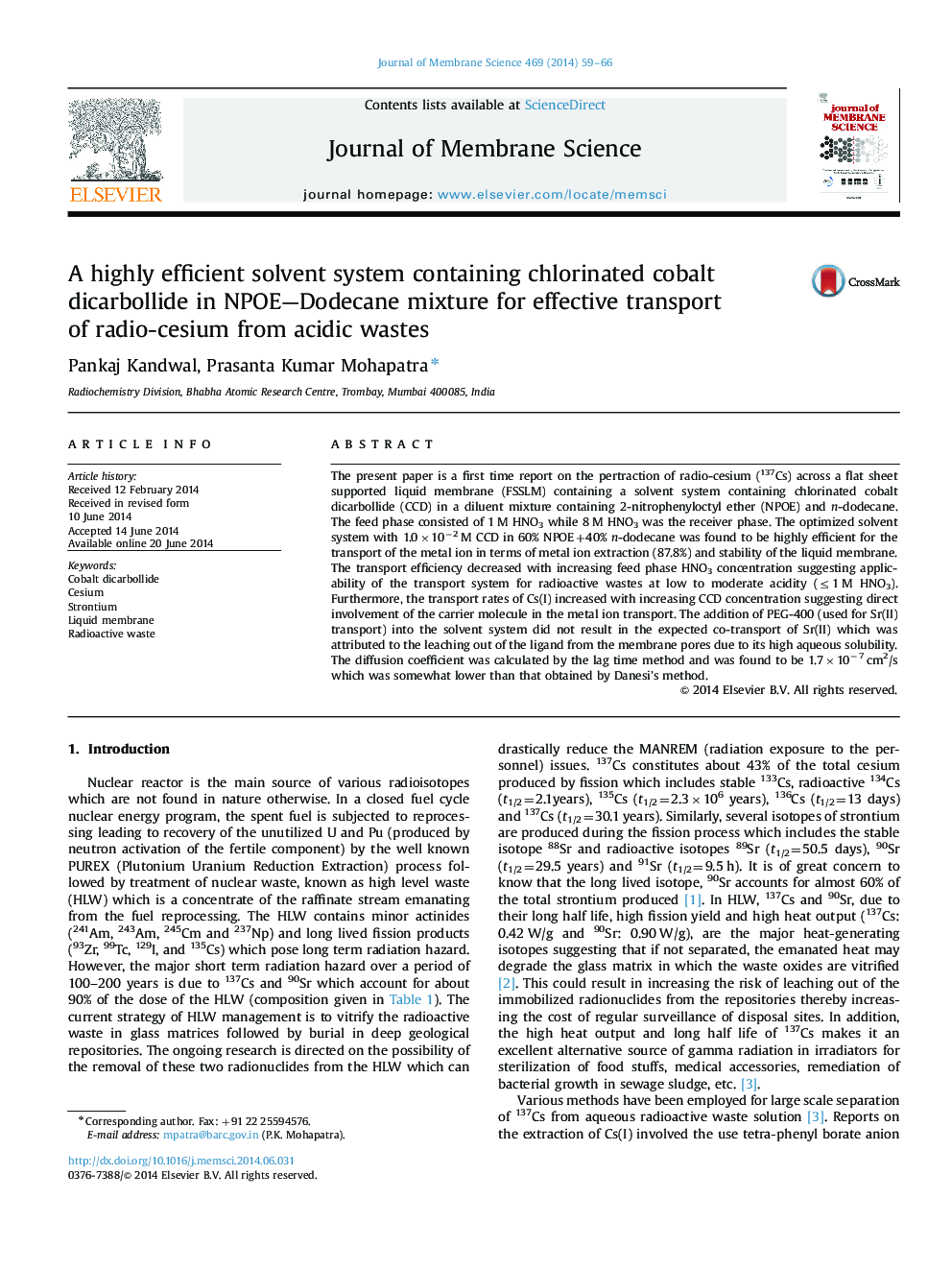| کد مقاله | کد نشریه | سال انتشار | مقاله انگلیسی | نسخه تمام متن |
|---|---|---|---|---|
| 633482 | 1456030 | 2014 | 8 صفحه PDF | دانلود رایگان |

• FSSLM studies on Cs+ transport were carried out using CCD.
• 0.01 M CCD solution in 60% NPOE+40% dodecane was found to be quite efficient.
• Nitric acid solutions were used as both feed and receiver.
• The FSSLM system is suggested to be useful for Cs recovery from HLW.
The present paper is a first time report on the pertraction of radio-cesium (137Cs) across a flat sheet supported liquid membrane (FSSLM) containing a solvent system containing chlorinated cobalt dicarbollide (CCD) in a diluent mixture containing 2-nitrophenyloctyl ether (NPOE) and n-dodecane. The feed phase consisted of 1 M HNO3 while 8 M HNO3 was the receiver phase. The optimized solvent system with 1.0×10−2 M CCD in 60% NPOE+40% n-dodecane was found to be highly efficient for the transport of the metal ion in terms of metal ion extraction (87.8%) and stability of the liquid membrane. The transport efficiency decreased with increasing feed phase HNO3 concentration suggesting applicability of the transport system for radioactive wastes at low to moderate acidity (≤1 M HNO3). Furthermore, the transport rates of Cs(I) increased with increasing CCD concentration suggesting direct involvement of the carrier molecule in the metal ion transport. The addition of PEG-400 (used for Sr(II) transport) into the solvent system did not result in the expected co-transport of Sr(II) which was attributed to the leaching out of the ligand from the membrane pores due to its high aqueous solubility. The diffusion coefficient was calculated by the lag time method and was found to be 1.7×10−7 cm2/s which was somewhat lower than that obtained by Danesi׳s method.
Journal: Journal of Membrane Science - Volume 469, 1 November 2014, Pages 59–66